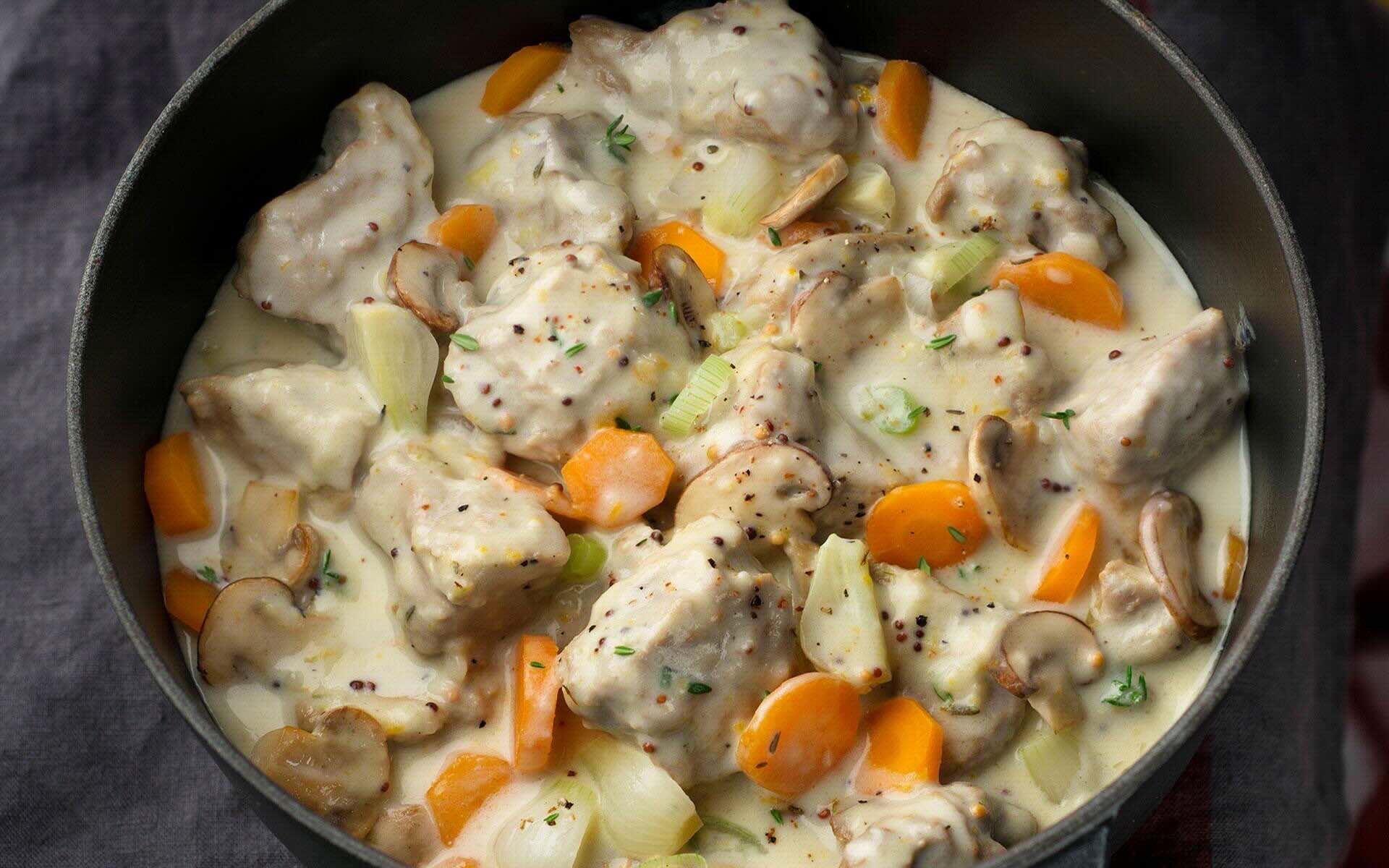
Blanquette de Veau is a classic French dish that has charmed taste buds for centuries. But what makes this creamy veal stew so special? Blanquette de Veau stands out due to its unique preparation method, where the meat is simmered in a white sauce made from a roux and enriched with cream. Unlike many stews, it doesn't involve browning the meat first, which keeps the flavors delicate and the sauce velvety. This dish, often served with rice or potatoes, is a staple in French cuisine and a favorite for family gatherings. Ready to learn more? Here are 39 fascinating facts about Blanquette de Veau that will make you appreciate this culinary gem even more!
What is Blanquette?
Blanquette is a classic French dish that has been enjoyed for centuries. It is a creamy, comforting stew typically made with veal, but variations with chicken or fish exist. Let's dive into some fascinating facts about this beloved dish.
Origins of Blanquette
Understanding the history of Blanquette can give us a deeper appreciation for this culinary masterpiece.
- Blanquette originated in France during the 18th century.
- The name "Blanquette" comes from the French word "blanc," meaning white, referring to the dish's creamy white sauce.
- Originally made with veal, Blanquette de Veau is the most traditional version.
- Blanquette was a peasant dish initially, made from leftover meat and simple ingredients.
- It became popular among the French aristocracy in the 19th century, elevating its status.
Ingredients and Preparation
The ingredients and preparation methods are what make Blanquette unique and delicious.
- Key ingredients include veal, carrots, onions, and mushrooms.
- The sauce is made from a roux, a mixture of butter and flour, combined with broth and cream.
- Lemon juice is often added to the sauce for a hint of acidity.
- Traditionally, Blanquette is served with rice or potatoes.
- White wine is sometimes used in the broth for added depth of flavor.
Variations of Blanquette
While the classic veal version is well-known, there are several variations of Blanquette.
- Blanquette de Poulet is made with chicken instead of veal.
- Blanquette de Poisson uses fish, offering a lighter alternative.
- Vegetarian Blanquette can be made using tofu or a variety of vegetables.
- Regional variations exist within France, each with slight differences in ingredients and preparation.
- Modern chefs experiment with Blanquette, adding unique twists like exotic spices or different meats.
Cooking Techniques
Mastering the cooking techniques is essential for making a perfect Blanquette.
- Slow cooking is key to tenderizing the meat and melding flavors.
- The meat is usually simmered in broth before being combined with the sauce.
- A bouquet garni (a bundle of herbs) is often used to infuse the broth with flavor.
- The sauce should be smooth and creamy, requiring careful whisking to avoid lumps.
- Blanquette is often finished with a liaison, a mixture of egg yolks and cream, for extra richness.
Cultural Significance
Blanquette holds a special place in French culture and cuisine.
- Blanquette is considered comfort food in France, often associated with family meals.
- It is a staple in French bistros and traditional restaurants.
- Blanquette has been featured in French literature, highlighting its cultural importance.
- It is often served during special occasions and holidays.
- Cooking Blanquette is seen as a rite of passage for aspiring French chefs.
Fun Facts about Blanquette
Here are some interesting tidbits that might surprise you about Blanquette.
- Blanquette was Julia Child's favorite dish to cook and eat.
- It has been featured in numerous cooking shows and culinary competitions.
- Blanquette recipes can be found in cookbooks dating back to the 1800s.
- The dish has inspired modern interpretations in fine dining restaurants worldwide.
- Blanquette is often paired with white wine, enhancing its flavors.
Health Aspects
While Blanquette is delicious, it's also interesting to look at its nutritional profile.
- Blanquette is high in protein, thanks to the meat and cream.
- It can be high in calories, so portion control is important.
- Using lean cuts of meat can make Blanquette a healthier option.
- Vegetable-based Blanquette offers a lower-calorie alternative.
- The dish provides essential vitamins and minerals, especially when made with a variety of vegetables.
Blanquette Around the World
Blanquette's influence extends beyond France, making it a global dish.
- Blanquette has been adapted in various countries, each adding their unique twist.
- In the United States, Blanquette is often made with chicken due to its availability.
- Asian versions of Blanquette might include ingredients like ginger or soy sauce.
- Blanquette is celebrated in international food festivals, showcasing its global appeal.
Blanquette de Veau: A Culinary Gem
Blanquette de Veau isn't just a dish, it's a piece of French heritage. This creamy, comforting stew has been warming hearts and homes for centuries. With tender veal, rich sauce, and a touch of history, it’s no wonder this classic remains a favorite. Whether you're a seasoned chef or a home cook, making Blanquette de Veau can be a rewarding experience. The blend of flavors and textures offers a taste of France in every bite. Plus, it's a great way to impress guests or simply enjoy a cozy meal with loved ones. So next time you're looking for something special to cook, give Blanquette de Veau a try. You might just find it becomes a staple in your kitchen. Bon appétit!
Was this page helpful?
Our commitment to delivering trustworthy and engaging content is at the heart of what we do. Each fact on our site is contributed by real users like you, bringing a wealth of diverse insights and information. To ensure the highest standards of accuracy and reliability, our dedicated editors meticulously review each submission. This process guarantees that the facts we share are not only fascinating but also credible. Trust in our commitment to quality and authenticity as you explore and learn with us.
